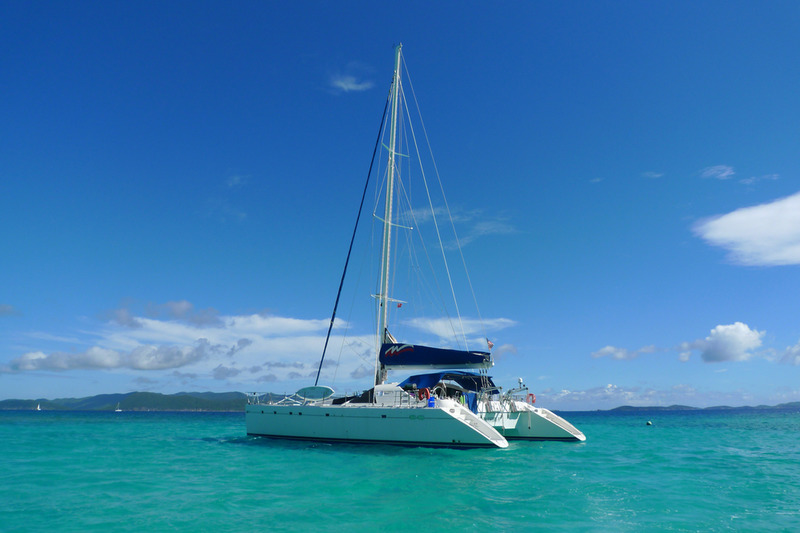At our site, we do everything we can to make the Canadian registry certificate process easier on our customers. If this is your first time getting a registry certificate in Canada (or even if it isn’t) the entire process can be a bit confusing. In this article, we’ll try to clear up some misconceptions so that you can figure out more clearly which certificates are right for you and your vessel. By that same token, if you have any questions, don’t hesitate to contact us. We’ve been helping people to get the right Canadian vessel registration for a long time, and now we can put that experience to use for you.
Easiest Canadian Registry Certificate Process
All commercial vessels need to be registered in Canada (with some unique exceptions) but not all pleasure crafts have to be. When it comes to pleasure craft, you have the option of whether to get a license or to register the craft. If you choose to license it, you have to have the license with you at all times when you’re behind the wheel of the boat. You also have to have the numbers on the side of the bow.
Should you decide to register your pleasure craft, you have to have exterior and interior markings of your vessel. The exterior markings include the port of registry after the name of the vessel. The interior ones include the official number and the registered tonnage of the boat. It’s important to keep in mind that if you’re only going to use your pleasure craft for recreational purposes, then you don’t need to have it registered. That being said, if you have any questions about this process, we have experts on hand to take your questions and direct you to the proper answers for your needs.
What Registration Is
When we say “registration,” what we mean is a “title system for vessel ownership.” Think of it like land title registry. You know when someone owns the “title to the land,” it’s their land. The same goes for vessel registration. When someone has registered their vessel, it’s pretty clearly their vessel. You can do a lot when you’ve registered your vessel. You can get your name approved and you can even get a marine mortgage through your vessel, should you qualify. There are benefits to registration, certainly.
Not many people know this, but you can also get registration for a vessel that’s under construction, too. If your vessel is already being built, about to be built, or actively under construction right now in Canada, your vessel can be temporarily recorded in the Register. It will simply be recorded in the Register as “a vessel being built in Canada.” That’s one way of getting ahead of the process quickly, by taking care of registration while it’s being constructed.

Mandatory and Optional
Registration is mandatory for certain vessels. For example, a vessel has to be registered if it isn’t a pleasure craft (i.e. it’s a commercial craft that will be used in commerce). There’s also mandatory registration for Canadian government vessels as well. Some government vessels however do have optional registration. These include pleasure craft, a vessel owned by a corporation that’s incorporated under the laws of a foreign state or a vessel in the executive possession of a “qualified person under a financing agreement under which the person will acquire ownership when the agreement is complete.” If that sounds a little bit confusing, well, that’s why are our experts are on hand.
We make it so that it’s easy to file for first time registration with any kind of vessel. Over the years, we’ve helped a lot of people through the “first time” registration process. There’s a reason for that: the first time you do something, it can be difficult and alien. Filling out one of these registration forms isn’t always easy, particularly if you’re doing it yourself or even by hand. We’re always on the lookout for how to make the vessel documentation process easier. So, we made it so that you can fill out any of the important Canadian vessel documentation forms online.
For the first time registration form, you have to pick a port of registry. This is the port where your vessel will be registered. Typically, this is also the port that your vessel will dock in as well. You’ll notice there’s a drop down menu these are the official ports that you can choose from. If you don’t see the port that you plan on hailing out of on here, be sure to reach out to us. You can pick the right port of registry that‘s appropriate for your vessel.
The Right Name for Your Vessel
You have to choose a name for your vessel as well. If you look at the form, though you have to choose three names. That’s because your first name might already be taken. Come up with three names that you feel are right for your vessel, and then put them down here. Of course, bear in mind that there are some limits to your name: it can’t be anything obscene or offensive. As with most things of this nature, use your common sense. If you have any inkling that one of the names you might like could be taken incorrectly, you’re probably much better off going with something else.
You’re asked to put three names because a lot of names are already taken. As you’ve probably noticed if you’ve been to a port in Canada at any point in the last few years, there are a lot of boats up here. Many of them are already have great names. If there’s a name that means a lot to you, you’re probably better off registering it quickly before it’s gone. We’ve had many customers over the years who, when choosing between licensing or registering for their pleasure boat, they’ve chosen the registering. Not because they wanted to spend the money, or because they were going to do any kind of commerce with their pleasure boat, but rather they wanted to lock in the name of the boat so that it was always theirs.
There are many other parts to registering a vessel for the first time. For example, there is certain information you have to give if your vessel was registered or documented in a foreign country. You have to provide what’s called “evidence of deletion.” This is also known as a “Deletion Certificate.” This form has to be issued by the foreign registry. The reason for this is simple: you need to be able to show proof that the foreign registry is closed. That way, the Canadian government knows that your vessel is free and clear of any and all encumbrances that could be lingering.
We included everything you need on our first time registration forms as well as all of the others. So, you don’t have to worry that something important has been left off. For example, you have to click whether you intend to use your vessel for pleasure or non-pleasure. Should you choose non-pleasure, then you have to fill out a “Descriptor of Vessel” as well. Of course, we can assist you with that as well. All the forms you’ll need for Canadian vessel registry are on our site.
In fact, after you’ve filled out your first time vessel registration, you can see all of the other forms we have there as well. In the old days, had you filled out one of these forms, you’d have had to mail them in. Now, you just press a few buttons and they’re uploaded. It’s just one more way we make it easier. We can make it even easier than that if you give us a call at (800) 419-9569 or look for more info on our site.

